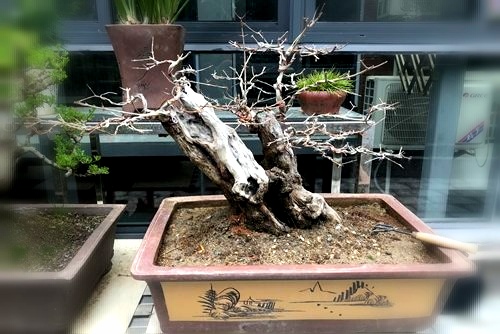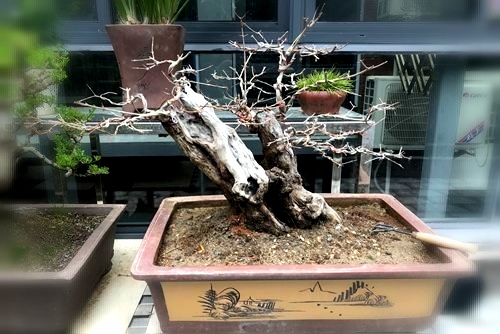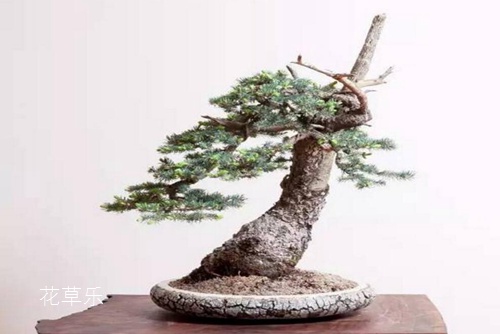How to grow pomegranate bonsai maintenance and management of pomegranate bonsai
The Chinese regard pomegranate as a mascot and regard it as a symbol of many children and blessings. Many families will have one, hoping for a good sign. Pomegranate trees are light-loving, drought-tolerant, cold-tolerant and do not choose soil, so they are very suitable for potted plants. How to raise pomegranate bonsai? Below, Hua Cao Le shares with you the knowledge of maintenance and management of pomegranate bonsai.
How to grow pomegranate bonsai maintenance and management of pomegranate bonsai

First, pomegranate bonsai lighting
The growing period of pomegranate bonsai requires all-day sunshine, and the more sunlight, the more flowers, the brighter. The leeward, sunny and dry environment is conducive to flower bud formation and flowering. When the light is insufficient, it will only grow leaves but not blossom, affecting the ornamental effect. The suitable growth temperature is 15-20 ℃, and the winter temperature should be lower than-18 ℃, otherwise it will suffer frost injury.
2. Fertilization of pomegranate bonsai
Nitrogen fertilizer should be applied every 10 days during bonsai growing period, nitrogen fertilizer should be applied frequently during fruit ripening period, and the proportion of phosphorus fertilizer and potassium fertilizer should be increased to facilitate the formation of flowers and fruits. The basin should be changed every 2 ~ 3 years in spring. Loose and fertile soil should be used in the basin soil, and some medium-and long-term fertilizers such as cottonseed skin and sesame residue can be added properly. When changing pots, pay attention to the root system pruning should not be too heavy, so as not to affect the flowering and fruiting of pomegranate in the same year.
Third, pomegranate bonsai watering
In summer, it is generally possible to water once a day, and every other day in late autumn. The pomegranate bud period is from late April to early June. There should be sufficient light and less watering to make the basin soil dry. When the new leaves on the branches wilt slightly, put the pomegranate tree in the shade for 30 minutes, and then pour enough water into the basin. Repeat this several times, and buds can appear in about 20 days. If the basin soil is too dry, it is easy to cause bud drop, dried fruit and fruit drop; the basin soil is too wet, although sometimes it does not affect the plant growth, but it is also prone to bud drop and fruit cracking. This is also one of the reasons that affect its blossom and fruit.
Fourth, pomegranate bonsai shaping
Pomegranate bonsai shaping, pomegranate tree sprouting strong, several times a year to grow new branches. It is often carried out before sprouting in spring, cutting off the overgrown, over-dense and weak branches, and cutting the branches short when the thickness of the branches reaches about 70% of the ideal thickness, so as to promote the growth and development of lateral branches. Care should be taken to preserve those robust fruiting mother branches. Buds that grow in summer and autumn should be cut off in time. After the fruit is in prison, you should cut off the shape does not need too much fruit, a medium-sized pomegranate bonsai can leave 3 to 5 fruits. The distribution of fruits should be scattered, sparse and dense, and can not be equidistant. If there are too many fruits, in addition to being disorganized, it will also affect the results of next year.
Pomegranate bonsai diseases and insect pests
Pomegranate diseases mainly include white rot, black pox and anthrax. Spraying equal volume Bordeaux solution diluted 200 times every half month can prevent the occurrence of many diseases. When the disease is serious, it can be sprayed with fungicides such as bacillus, mancozeb, carbendazim and so on. Never use omethoate or dichlorvos pesticides. Do not use methamidophos and monocrotophos during flowering, which affect pollination.
Time: 2019-04-24 Click:
- Prev

How to raise pomegranate bonsai? How to make pomegranate bonsai?
Pomegranate basin landscape dry branches, foliage, flowers and fruits, high ornamental value. Because of its strong adaptability and easy cultivation, pomegranate is often cultivated as bonsai. How to raise pomegranate bonsai? How to make pomegranate bonsai? Bonsai should be placed on the sunny balcony, the longer the sunshine, the better. If there is not enough light, the branches are easy to grow and become thinner.
- Next

Bonsai introduction to the four aristocratic cypress, boxwood, lobular red sandalwood and yew bonsai
With the improvement of living standards, people more and more like to plant potted plants indoors to regulate the air, improve the indoor environment and enhance the artistic flavor of life. Bonsai is generally divided into two categories: tree stump bonsai and landscape bonsai. Due to the differences in regional environment and natural conditions, bonsai can be divided into many schools.
Related
- Fuxing push coffee new agricultural production and marketing class: lack of small-scale processing plants
- Jujube rice field leisure farm deep ploughing Yilan for five years to create a space for organic food and play
- Nongyu Farm-A trial of organic papaya for brave women with advanced technology
- Four points for attention in the prevention and control of diseases and insect pests of edible fungi
- How to add nutrient solution to Edible Fungi
- Is there any good way to control edible fungus mites?
- Open Inoculation Technology of Edible Fungi
- Is there any clever way to use fertilizer for edible fungus in winter?
- What agents are used to kill the pathogens of edible fungi in the mushroom shed?
- Rapid drying of Edible Fungi

